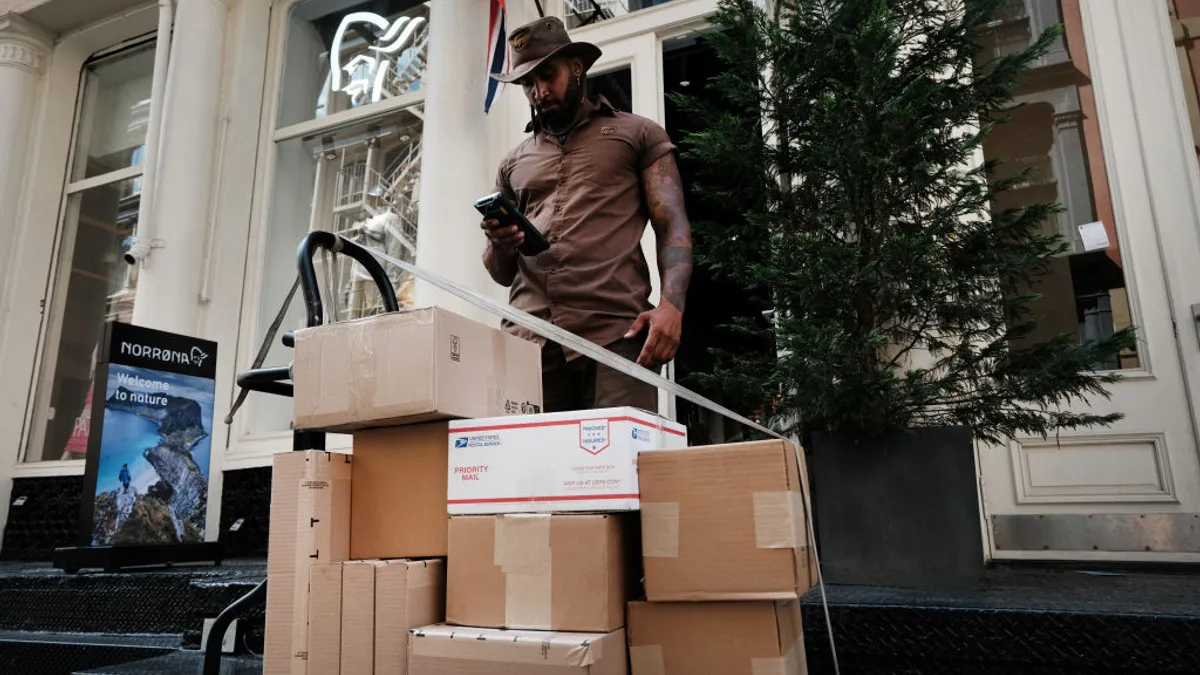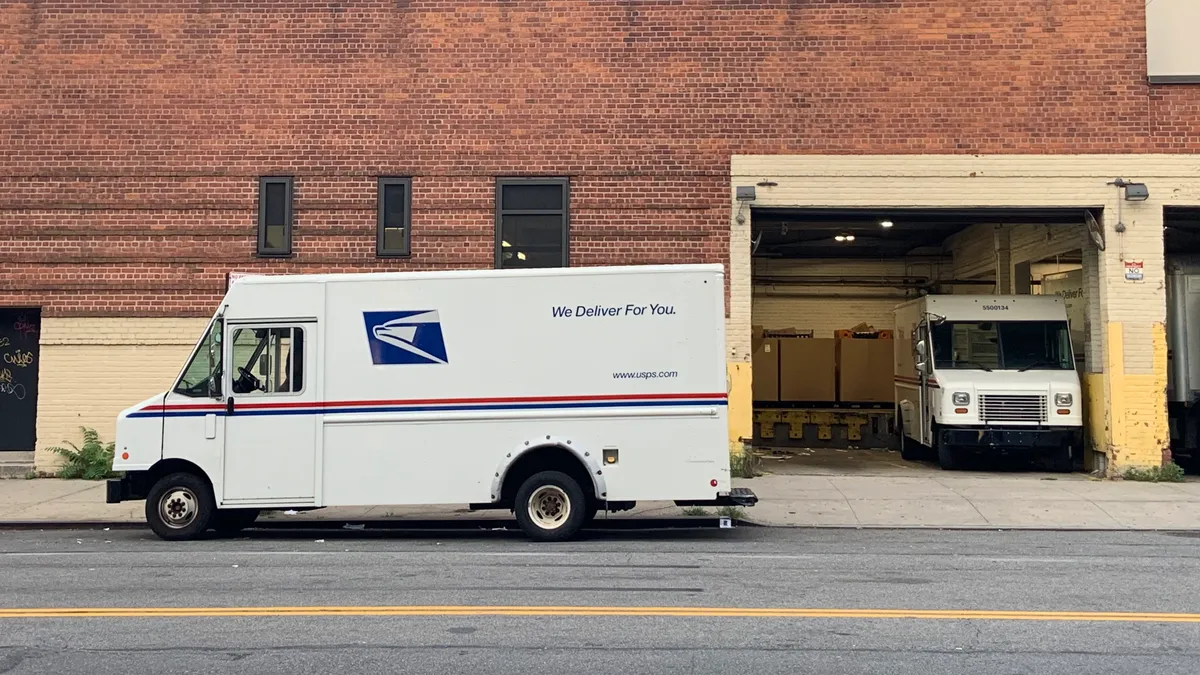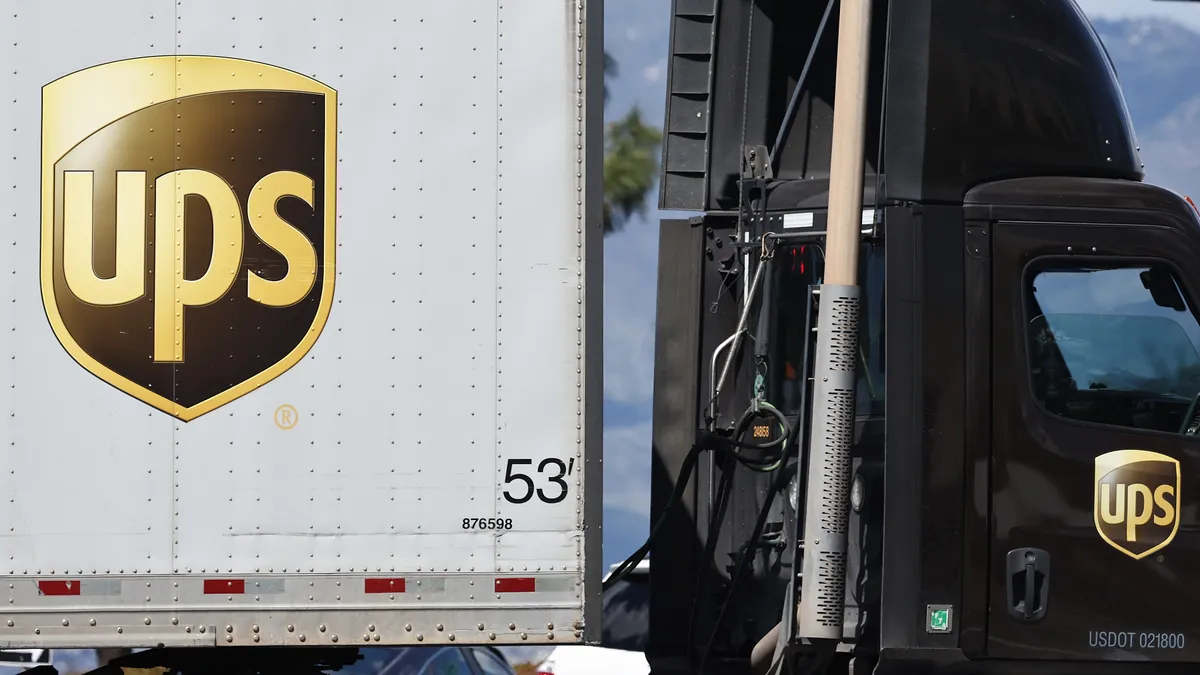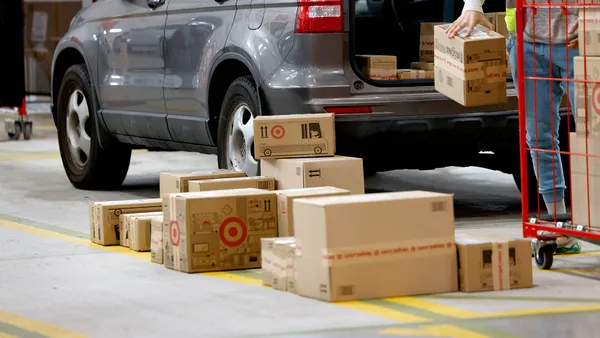This is Patent Pending. Supply-chain-related patent applications are published every day and this is where we'll talk about the ones that could have the biggest impact on the supply chain and the ones that challenge the norm. We want to give you an idea of where supply chains are heading and what the industry is thinking. Read the previous issue here.
The package tailor is in

Amazon has made strides to automate many parts of its operations. This includes the automated drive units that move shelves to pickers and the Pegasus robot that it deployed in its sort centers in 2019. But a patent application published this month also highlights its efforts to automate the packing process.
It's not just an effort to automate the packaging process: It's an attempt to ensure flexible mailers used for shipping are exactly the size needed for the product being delivered.
"In current automated packaging systems, if preformed packages, such as standard-sized padded mailers, are used, then packaging volumes greater than what is necessary to package single-item or multi-item orders often result, leading to wasteful shipping volumes and unnecessary transportation costs," Amazon wrote in its patent.
Amazon's solution is to use a system that will create packages out of plastic or a polymer biofilm and a process of folding and "welding" that can create a package the exact size it needs.
"This ability to generate packages of different sizes could be combined with a system for inventory conveyance to become an automated packaging system, as seen in the above image. The system will place different orders into buckets at a filling station before sending them to get a set of customized packaging. The packaging system is able to create the correct size by pressing the packaging against a shaping element. After it is sealed gravity aids in depositing the order in the package. The bucket is sent back to the filling station and the process is repeated.
Read up:
Your order is now optimized

Warehouse operators are constantly looking for ways to optimize pick performance. As more e-commerce orders pour into facilities and companies make tighter and tighter delivery deadlines, every second counts in the fulfillment process. DHL outlines its ideas for improving order picking with allocation optimization and order clustering in a patent application published earlier this month.
"The shortfalls in current WMS capabilities contribute to numerous warehouse inefficiencies including, but not limited to, sub-optimal labor utilization, picking strategies, cycle times, and throughput," DHL wrote in its patent. "These inefficiencies, in turn, can result in sub-optimal labor management and/or assignment, which is important given that labor constitutes approximately 40-60% of warehousing costs and a significant portion of total labor costs are due to suboptimal labor utilization."
What DHL outlines is its solution for moving beyond random inventory allocation within warehouses, which it says is common under traditional WMS logic, and the first-come, first-serve process for order picking.
DHL's process uses multiple algorithms that take in data from the order, and information on the existing inventory and the inventory's location in the warehouse. It will then look at which zone in the warehouse is able to fulfill the most items in the order and will then repeat this process until it has a pick plan for all of the order parts. But then these allocations have to be given to pickers, a process known as order grouping. Optimizing order grouping means optimizing the path taken by these pickers in a warehouse.
The logic that DHL employs tries to limit the number of aisles a picker has to visit when fulfilling an order.
"The order grouping optimization process can provide pick assignments to pickers based not only on when the orders are received but also based on the most efficient orders according to SKU location," the patent reads, explaining how it differs from first-come, first-serve processing.
The design of this system also doesn't require any changes to an existing WMS, as seen in the image above.
"Rather than requiring integration into the existing warehouse management system, the warehouse picking optimization system is modular in nature, which allows the existing warehouse management system to operate whether or not the warehouse picking optimization system is present," the patent explains.
Read up:
Bus ticket for one drone, please

There is no shortage of grand plans when it comes to drone delivery. Amazon has outlined ideas for its network, Walmart has presented details for a drone delivery system. But a patent application published last month shows that eBay is also thinking about drone delivery. Why? Because it's 2021 and are you really an e-commerce retailer if you haven't filed a patent for drone delivery?
Like most drone delivery ideas, the final step here is the same: a drone delivering a package. But eBay's idea relies on delivering not to a customer's home, but to public transportation infrastructure, like a bus stop. And since drones have a limited battery life, they could use public buses to travel for part of their journey in an attempt to preserve energy.
This would "lower setup costs of drone delivery by utilizing existing infrastructure," the patent reads. "For example, a bus traveling along an existing bus route can deliver drones and packages to a bus stop within a predetermined radius of a package destination, and one or more drones can deliver one or more packages from the bus stop to the package destination."






















